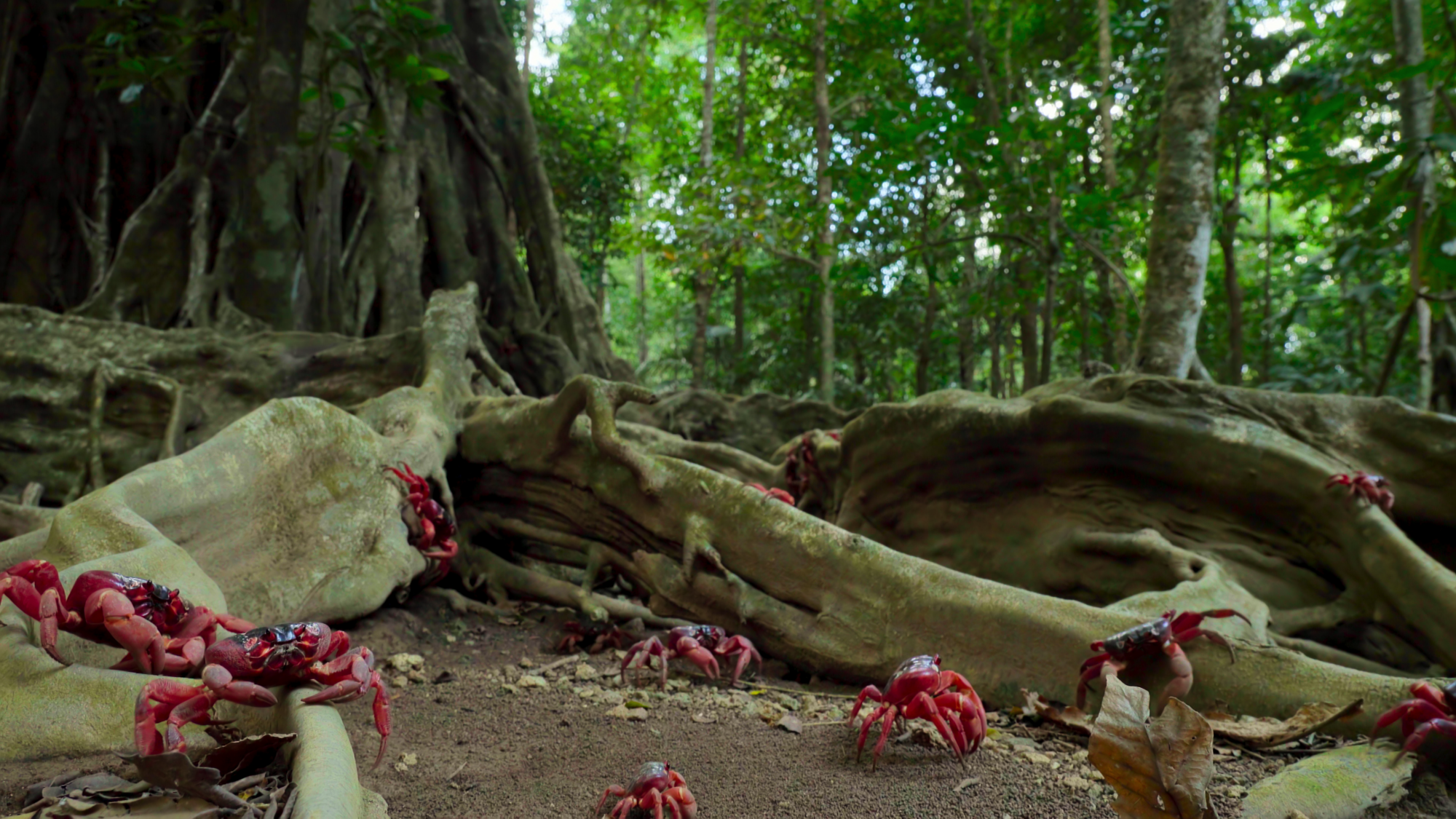— Episode synopsis —
Some animals migrate from the moment that they’re born, and their first journey is almost always their most challenging. For female turtle hatchlings on Mexico’s Pacific coast, that means running a gauntlet of predators. They’ll spend 15 years at sea before returning to lay their own eggs on the very same beach. For the billions of baby red crablets of Christmas Island, it’s a chaotic journey past cannibal crabs and across manmade obstacles to get back to the forest. Young pumas must learn to hunt from their mothers before venturing out in search of their own territory, and elephant seal pups have to master the art of swimming before leaving the safety of the beach and striking out on their own. But for a few species, there’s an even bigger problem: what do you do when the environment your ancestors migrated through for millions of years has changed – and that change is putting your survival at risk? A family of elephants will travel farther than anyone ever imagined in search of answers.
Elephant Journey in China
Our Planet II is the first broadcast pro- gram to tell the incredible story of a herd of wild Asian elephants that went on a unique two-year journey, traveling hundreds of kilometres across China – through villages and even into the city of Kunming – in search of a new home.
Demoiselle Cranes in the Himalayas
This species has the toughest migration of any bird, crossing over the Himalayas at heights of 8000 meters and across the harsh Gobi Desert before wintering in the village of Khichan, India, where villagers have offered them a safe space to spend the winter. The voyage is made even more extraordinary by the fact that when the cranes’ ancestors first started their migration, some 45 million years ago, the Himalayas did not yet exist.
Tawaki Penguins in Fiordland, New Zealand
This rarely seen species makes the longest journey of any penguin and hides their eggs away in the rainforests of Doubtful Sound. They’re very wary of human visitors – the crew spent three weeks in stealth mode, spending over 10 hours a day stationary in their hides, creeping through bogs without impacting the environment, and using new low light remote cameras to capture the most intimate nest scenes of Tawaki ever filmed.
Red Crabs on Christmas Island
50 million adult red crabs travel from the forest to the coast twice a year to spawn, navigating the infra- structure of humans thanks to special bridges and subways that have been built across their migration path to ensure their safety. This is the first time their “modern migration” has been filmed in such detail, including the return migration of billions of larval baby crablets in likely the largest return event ever caught on film.

Pumas in Patagonia
Pumas travel huge distances in search of territory to hunt, and adult female pumas are constantly looking for food, especially when feeding young cubs. The filming team witnessed this mother in stalk after stalk over the course of three weeks, until the perfect hunt happened right in front of them: She brought down an adult bull guanaco within three meters of the camera team, who were on foot – with no cover to be found.
Turtle Arribada on Escobilla Beach, Mexico
This may be the biggest nesting turtle event ever caught on film, in the last, and perhaps the longest, stretch of beach on earth where female olive ridley turtles can be seen nesting in the hundreds of thousands – laying their eggs in the same spot they were born, 15 years earlier. The team worked with the Mexican Navy to film these protected turtle nests, but despite the military presence, poachers on horseback regularly rode off with sacks full of eggs.
Elephant Seals and Orcas in the Falkland Islands
One single female orca has perfected a risky hunting behavior, in which she stalks the shallow “weaning pool” of young elephant seal pups. It’s an example of how entirely new migrations can form around single events and behaviours, and the team captured the orca hunting in the pool in closer detail than ever before.

